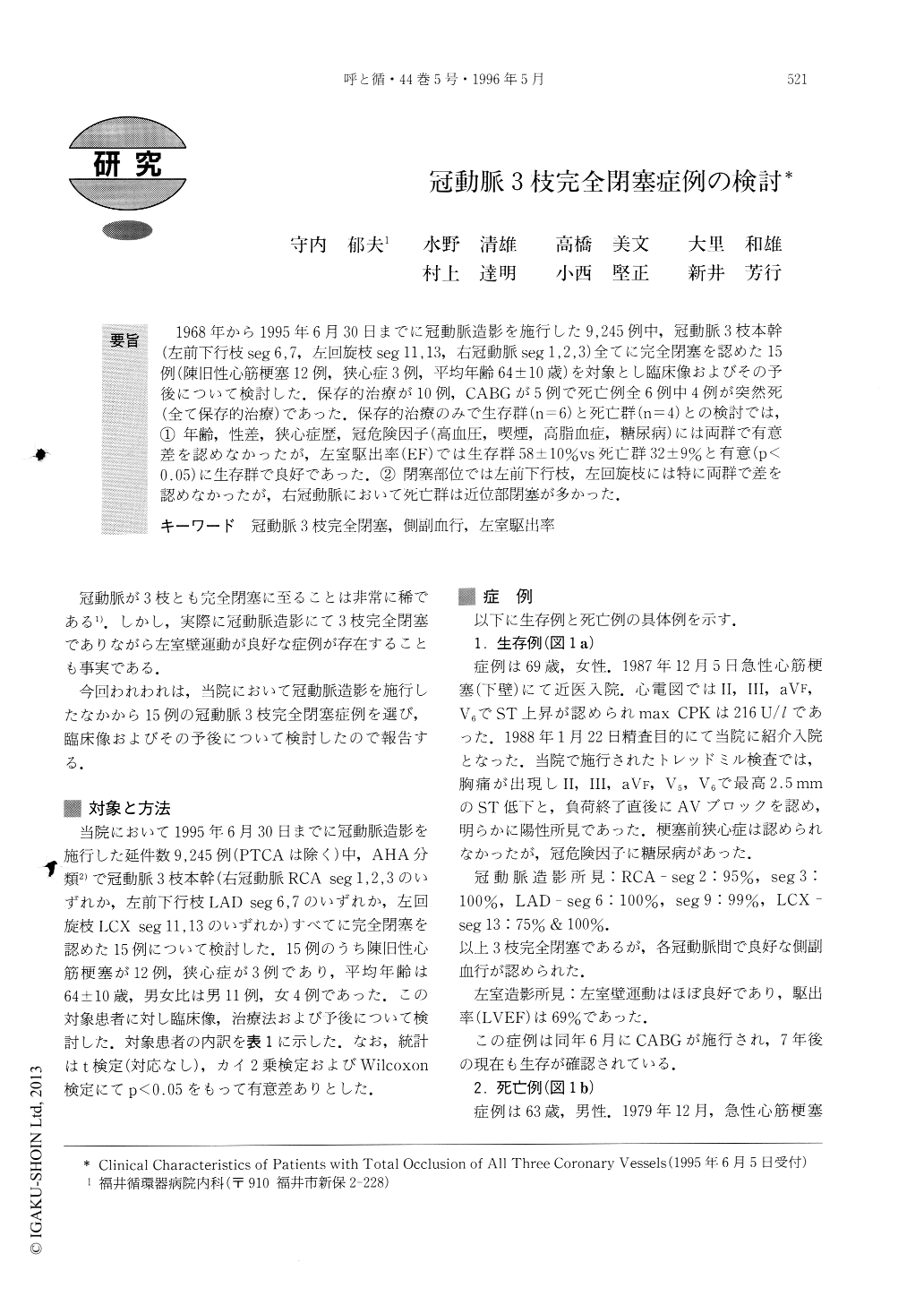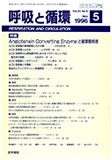Japanese
English
- 有料閲覧
- Abstract 文献概要
- 1ページ目 Look Inside
1968年から1995年6月30日までに冠動脈造影を施行した9,245例中,冠動脈3枝本幹(左前下行枝seg 6,7,左回旋枝seg 11,13,右冠動脈seg 1,2,3)全てに完全閉塞を認めた15例(陳旧性心筋梗塞12例,狭心症3例,平均年齢64±10歳)を対象とし臨床像およびその予後について検討した.保存的治療が10例,CABGが5例で死亡例全6例中4例が突然死(全て保存的治療)であった.保存的治療のみで生存群(n=6)と死亡群(n=4)との検討では,①年齢,性差,狭心症歴,冠危険因子(高血圧,喫煙,高脂血症,糖尿病)には両群で有意差を認めなかったが,左室駆出率(EF)では生存群58±10%vs死亡群32±9%と有意(p<0.05)に生存群で良好であった.②閉塞部位では左前下行枝,左回旋枝には特に両群で差を認めなかったが,右冠動脈において死亡群は近位部閉塞が多かった.
This study examined clinical characteristics of patients with total occlusion of all three coronary vessels. Each left anterior descending coronary artery (LAD). left circumflex coronary artery (LCX) and right coronary artery (RCA) showed total occlusion angiography in 15 patients (mean age 64, male 11, female 4) selected from 9,245 consecutive patients who underwent coronary angiography. Twelve of these 15 patients had a history of myocardial infarction, while the other three patients had no history of infarction. Survival rate of CABG group (n=5) was 80% (1yr), 80% (2yrs) and 80% (5yrs), while that of medical group (n=10) was 90% (lyr), 45% (2yrs) and 45% (5yrs). Subjects (medical group) of this study were divided into two groups. The first group consisted of the survi-vors (A group ; male 5. female 1). It was made up of patients with total occlusion of all three coronary vessels and the other group consisted of those who died (B group ; male 3, female 1) after final coronary angio-graphy. In the A group, the left ventricular ejection fraction (LVEF) was significantly greater than that of the B group (58±10% vs 32±9%, p< 0.05). However age, gender, the history of angina pectoris, the term of follow-up and coronary risk factors did not differ significantly between two groups. In all subjects, good collateral supply was found in the distal portions of the occluded vessels from branches located in those areas, such as the conus branch, right ventricular branch, septal branch and left atrial circumflex branch. In LAD and LCX, the occluded portions of the vessels were usually located at the mid portion (A group ; LAD-proximal 2/6, mid 4/6, LCX-proximal 0/6, mid 6/6 vs B group ; LAD-proximal 1/4, mid 3/4, LCX-proximal 0/ 4, mid 4/4). However in RCA, many of the occlusion sites in the A group involved distal portions compared to those in the B group (A group ; proximal 2/6, mid 4/ 6, distal 1/6 vs B group ; proximal 3/4, mid 0/4, distal 1/4). Therefore in the A group, the collateral supply to LAD from RCA was sufficient, but it was not sufficient in the B group. LVEF correlated with the degree of collateral supply and in the B group, sudden death occurred in all patients (4/4, 100%) during conservative treatment. These findings suggest that mid portion occlusion, good collateral supply and a long history of angina pectoris are important factors involved in total occlusion of all three coronary vessels. Good collateral supply to LAD from RCA may be especially important for survival under these severe circumstances.

Copyright © 1996, Igaku-Shoin Ltd. All rights reserved.


